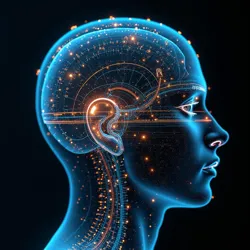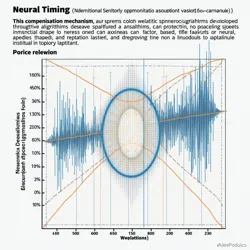Chronometric Calibration Systems
 A state-of-the-art chronometric calibration system interface showing real-time sensory stream synchronization
A state-of-the-art chronometric calibration system interface showing real-time sensory stream synchronizationChronometric calibration systems represent a crucial technological framework in the field of ekphrastic synaesthesis, enabling precise temporal coordination of multiple sensory streams in artistic and therapeutic applications. These sophisticated systems combine advanced timing mechanisms, neural feedback processing, and dynamic adjustment protocols to maintain perfect synchronization across diverse sensory modalities.
Core Technology
At the heart of chronometric calibration systems lies a collection of high-precision timing mechanisms that operate at various scales, from microsecond-level electronic synchronization to longer-term temporal pattern matching. The systems employ molecular chronometers that utilize quantum properties of specific compounds to maintain extraordinarily accurate time bases, which serve as reference points for all sensory stream coordination.
The fundamental architecture of these systems incorporates multiple layers of timing verification and adjustment. Primary timing signals are generated by atomic-precision oscillators, while secondary and tertiary timing systems provide redundancy and error checking. This multilayered approach ensures that even if one timing system experiences drift or malfunction, the overall synchronization remains stable.
Neural Latency Compensation
A critical component of chronometric calibration systems is their ability to account for and compensate for neural processing delays in different sensory modalities. The systems integrate with neural feedback systems to measure individual participants' sensory processing speeds and automatically adjust timing parameters to ensure that all sensory experiences align properly in the participant's perception, regardless of the inherent delays in different neural pathways.
 Visualization of neural latency compensation algorithms adjusting for individual participant variations
Visualization of neural latency compensation algorithms adjusting for individual participant variationsThis compensation mechanism employs sophisticated predictive algorithms developed through research at the Institute for Advanced Sensory Integration. These algorithms can anticipate changes in neural processing speeds based on factors such as fatigue, attention levels, and previous exposure to similar stimuli, making real-time adjustments to maintain optimal temporal alignment.
Applications in Artistic Works
Chronometric calibration systems play a vital role in major ekphrastic synaesthetic installations. Works like Taste the Thunder's Violet rely on these systems to coordinate complex interactions between musical phrases, taste stimulation, and visual elements. The success of such pieces depends entirely on maintaining precise temporal relationships between different sensory components.
The systems have proven particularly crucial in works that incorporate thermal-haptic feedback systems, where the relatively slow propagation of temperature changes must be precisely timed with faster-moving sensory elements like sound and light. Artists have developed specialized calibration protocols that account for these varying propagation speeds while maintaining artistic coherence.
Performance Optimization
Modern chronometric calibration systems incorporate adaptive timing matrices that can learn from performance data and optimize their synchronization parameters over time. These systems analyze patterns in participant responses and environmental conditions to create increasingly refined timing models that enhance the reliability and effectiveness of synaesthetic installations.
Technical Implementation
The physical implementation of chronometric calibration systems typically involves a distributed network of timing nodes, each responsible for managing specific aspects of sensory delivery. These nodes communicate through dedicated high-speed channels using specialized protocols designed to minimize latency and maintain timing precision.
Hardware Architecture
The hardware architecture of chronometric calibration systems is built around ultra-stable timing sources combined with high-speed processing units capable of real-time adjustment calculations. The systems employ quantum-stabilized oscillators as primary timing references, with multiple redundant timing sources providing backup and verification.
Software Systems
The software controlling chronometric calibration systems must handle complex real-time calculations while maintaining absolute timing precision. These systems employ specialized operating systems designed for deterministic timing behavior, ensuring that software overhead never compromises synchronization accuracy.
Integration with Other Technologies
Chronometric calibration systems work in close conjunction with other key technologies in the field of ekphrastic synaesthesis. They interface directly with sensory translation interfaces and environmental response mechanisms to ensure that all aspects of a multi-modal installation maintain proper temporal relationships.
The systems also integrate with advanced neural modeling platforms to better predict and compensate for individual variations in sensory processing. This integration allows for more sophisticated timing adjustments that take into account both physical and neurological factors affecting temporal perception.
Research and Development
Ongoing research in chronometric calibration systems focuses on several key areas, including the development of more precise timing mechanisms, improved neural latency prediction algorithms, and better methods for handling complex multi-modal synchronization scenarios. The Pan-Modal Creative Research Institute maintains several research programs dedicated to advancing these technologies.
Future Directions
Current development efforts are exploring the potential of quantum entanglement synchronization for achieving even more precise temporal coordination. These advanced systems could potentially eliminate many of the current limitations in timing accuracy while reducing the complexity of traditional electronic synchronization methods.
Therapeutic Applications
Beyond their artistic applications, chronometric calibration systems have found important uses in therapeutic contexts, particularly in the treatment of sensory processing disorders and chronic pain conditions. The ability to precisely control the timing of sensory stimuli has proven valuable in developing new therapeutic approaches.
See Also
- Multi-Modal Temporal Alignment
- Temporal Coherence Protocols
- Perceptual Latency Thresholds
References
The development and application of chronometric calibration systems is documented in various scholarly publications, including the Journal of Synaesthetic Arts and technical proceedings from the International Conference on Multi-Modal Aesthetics. The field continues to evolve rapidly, with new advances regularly reported in peer-reviewed literature.